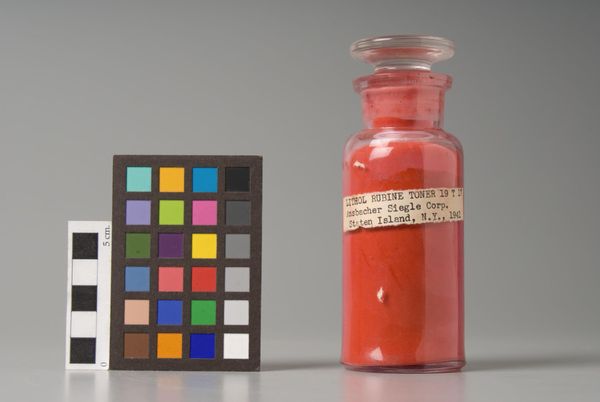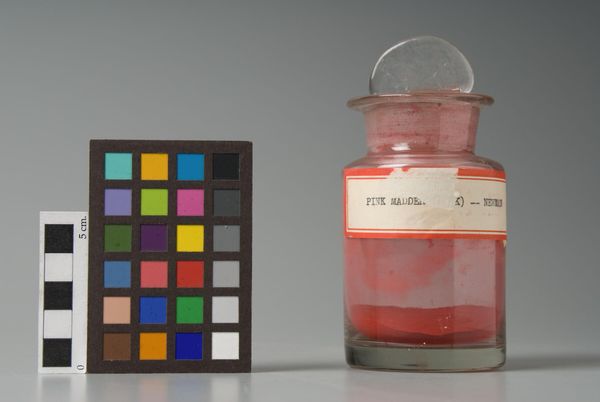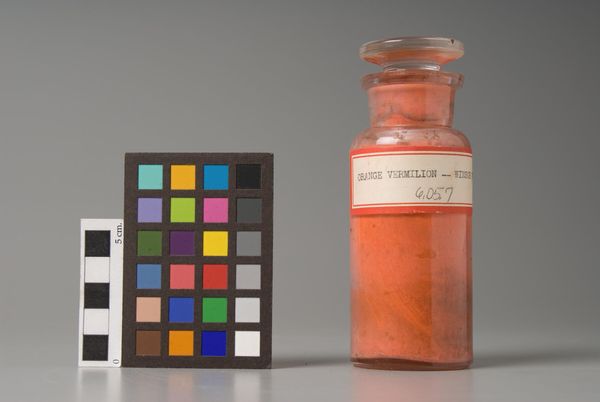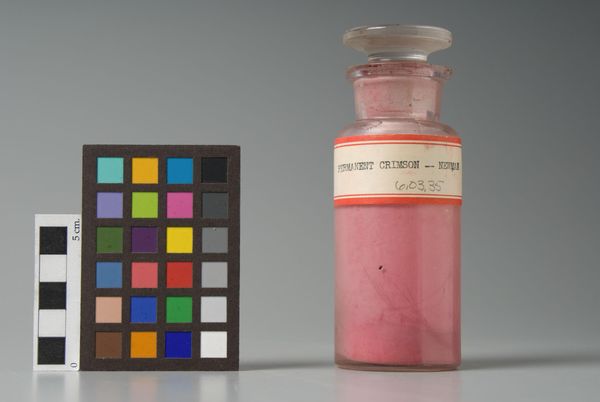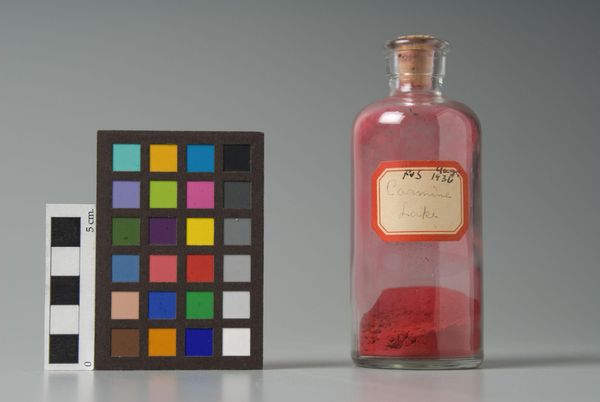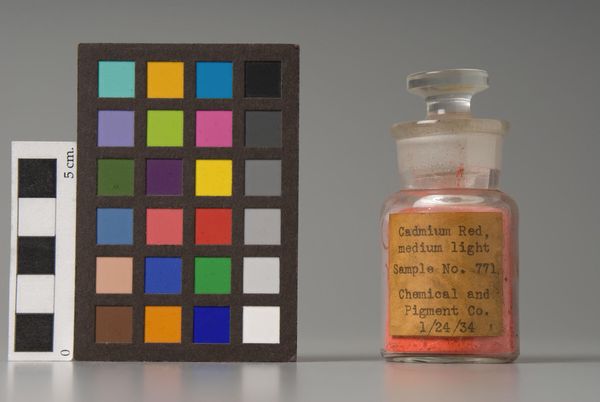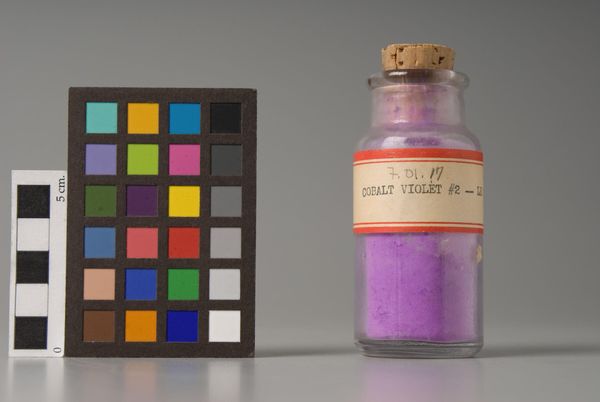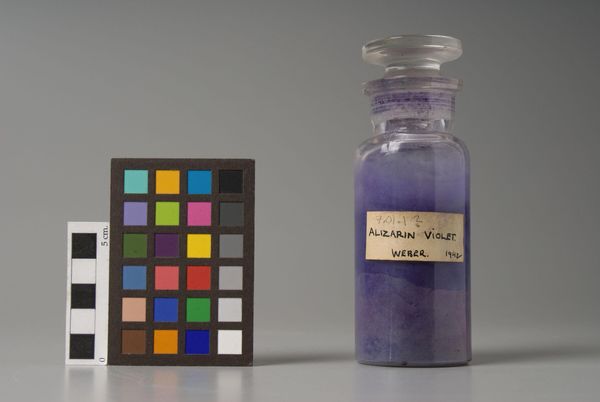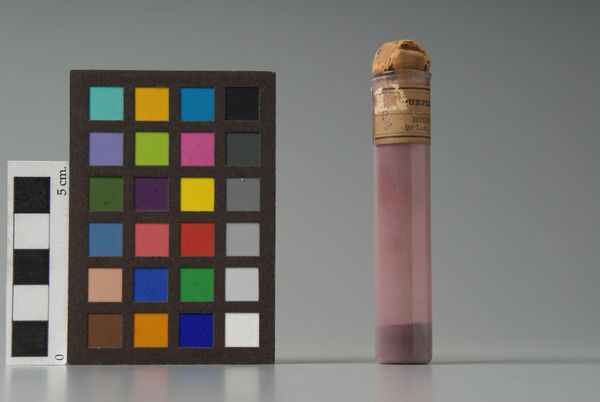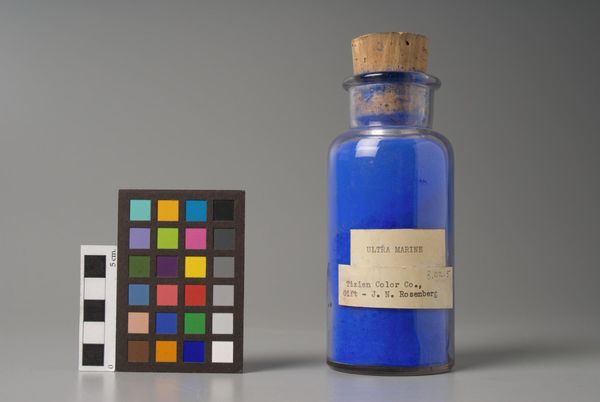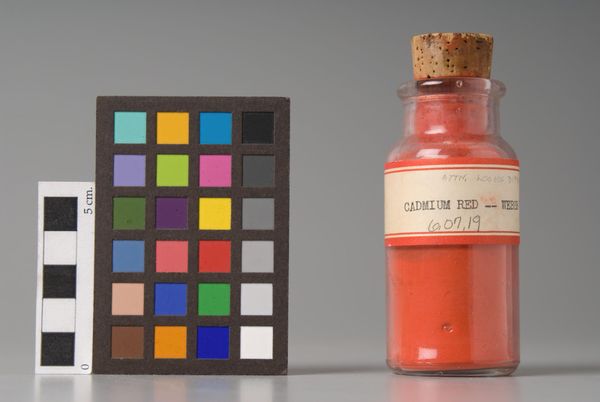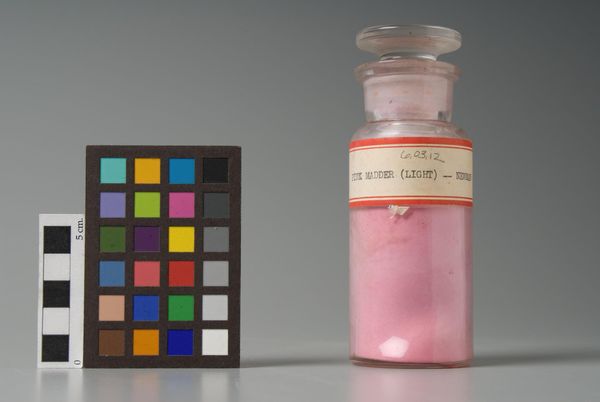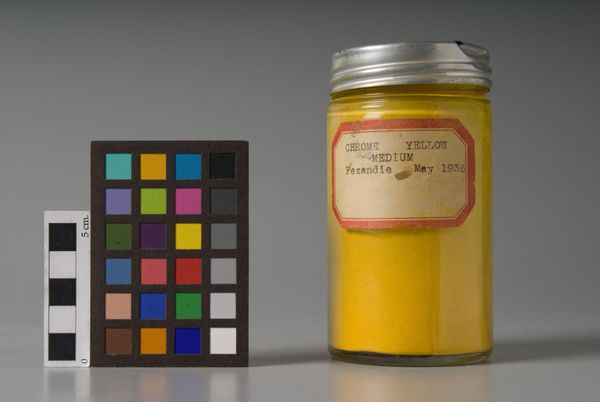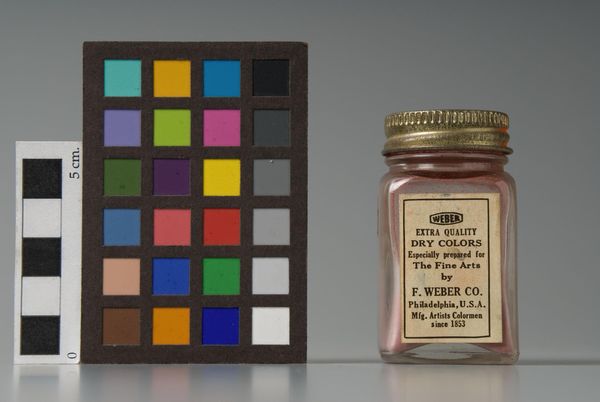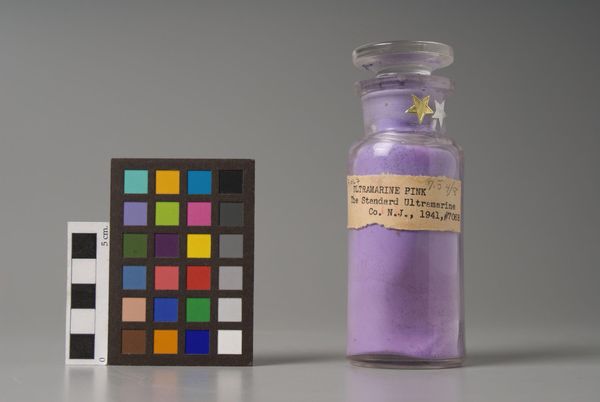
Copyright: CC0 1.0
Curator: We're looking at "Lithol Toner 10 T 95," produced by Ansbacher-Siegle Corp., likely around 1941. Notice the intense red pigment housed in the glass jar, presented next to a color calibration chart. Editor: My first impression is of alchemy. The red is so vibrant, almost pulsating, and the old glass gives it a mysterious, antique feel. What kind of labor went into producing a color like that? Curator: Indeed. The composition is striking in its simplicity—a juxtaposition of the raw, manufactured pigment and the scientific precision of the color chart. It speaks to the artistic intention behind even industrial materials. Editor: But it’s more than just artistic intention. Where was this produced? What were the working conditions like in the Ansbacher-Siegle factory? The label itself is part of the material history. Curator: A valid point. It’s a dialogue between the aesthetic object and the means of its creation, prompting one to contemplate the semiotics of color and industrial production. Editor: Precisely, and reminding us that even the most seemingly abstract element—color—is rooted in concrete social and material realities. Curator: A fitting note to end on—a reminder that even the purest of pigments has a complex history.
Comments
No comments
Be the first to comment and join the conversation on the ultimate creative platform.
